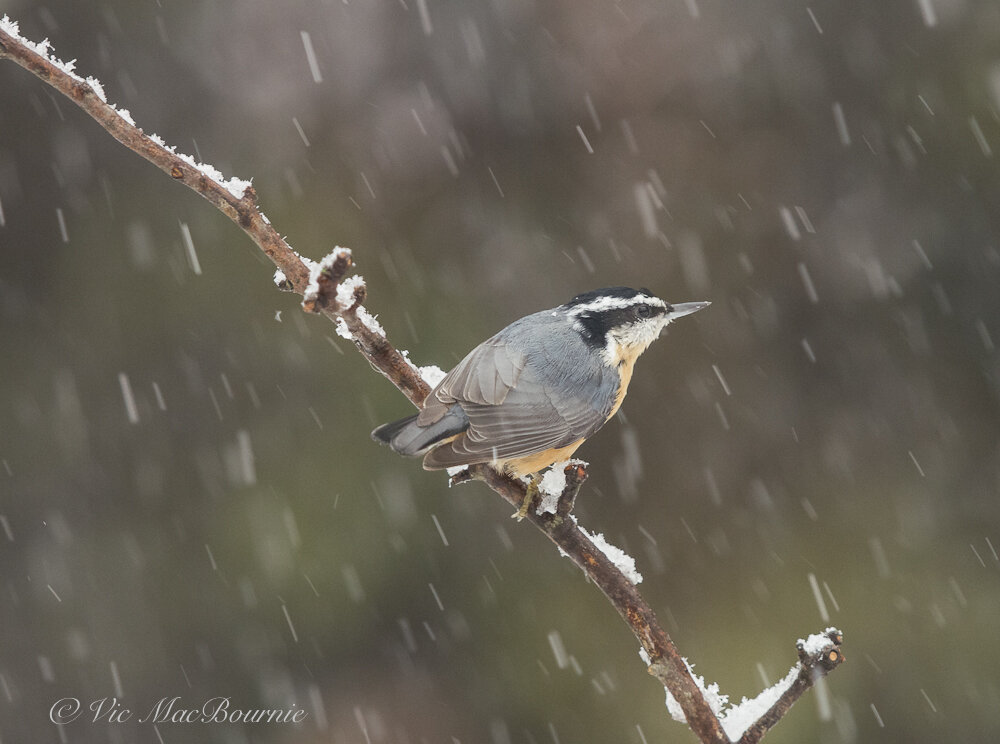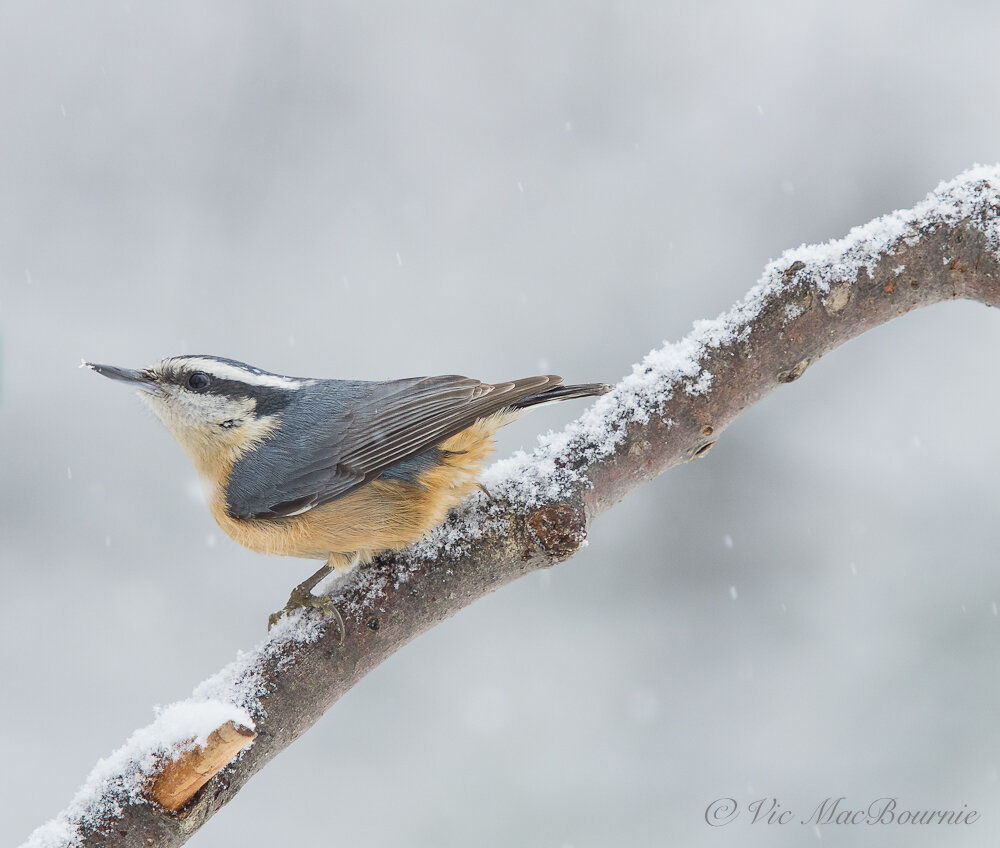How to attract nuthatches to your woodland garden
How did nuthatches get their name
Who doesn’t love a nuthatch?
These perky little birds – as cute as a chickadee and at least as busy – have developed a real fan-club following from bird lovers. Whether it’s the white-breasted (Sitta carolinensis), or the red-breasted (Sitta canadensis) these lovable little birds characterized by large heads, short tails and strong bills have become welcome visitors to our backyard landscapes and bird feeders in parts of Canada and the United States through to Mexico.
Their constant flitting from bird feeder to the nearest tree in our woodland gardens has earned them more than a growing fan base, it’s also a big part of how they earned their unusual names.
While Nuthatches are racing to and fro, they are actually taking seeds and “nuts” from the feeder and stuffing them into any crevice they can find in tree bark. Later, they return to hack away (or “hatch”) at the seeds with their small, pointy bills. And thus, their common name was born – by combining one of their favourite foods the “nut,” with their method or retrieving it “hatching.”
And so, we have the Nuthatch.
Red-Breasted Nuthatch in Pine tree.
Friendly enough to eat out of your hand
Maybe these little birds with their blue-grey back and white undersides have gained a following because, after a little practise, they are one of the birds that will readily eat out of your hand. Maybe it’s just because they always seem so darn busy – like a wind-up toy that never unwinds.
It does not take long to realize that Nuthatches have a wide assortment of whistles, trills and calls in their repertoires. Their breeding songs are simple and often identical to their contact calls. Cornell School of Ornithology has excellent recordings of the red-breasted Nuthatch various sounds. You can listen to them here.
Red-breasted nuthatch in winter storm.
How to attract Nuthatches to your feeders
They are certainly one of the busiest birds at our feeders. Maybe because they really can’t decide what they should snack on next. They are not particularly picky, readily feasting on sunflower seeds, nuts, meal worms, as well as high-calorie suet or peanut butter.
I have also found that they are big fans of Wild Birds Unlimited’s, Bark Butter. Not surprising, since Bark Butter attracts 152 different bird species. It’s expensive stuff, but if used sparingly, it is a great addition to your bird feeding area. I use it to fill holes that I drilled into a branch hung from the feeders. This way I can keep the squirrels from getting to it before the birds devour it.
But back to Nuthatches.
White-breasted Nuthatch photographed from Tragopan blind in our woodland garden.
It would not be hard to think, considering their activity at our bird feeders, that Nuthatches were primarily seed eaters. In fact, they are primarily insectivorous eating copious amounts of insects providing a natural control where insect infestations and caterpillar outbreaks occur.
When they are not “hatching nuts” these small passerine birds forage for insects hidden under bark by climbing along tree trunks and branches often upside-down. Their acrobatics are even more pronounced as they forage headfirst down a tree looking for dinner.
Planting natural sources of seeds, such as sunflowers, black-eyed Susans, coreopsis and other seed producers as well as Oaks, Beech and Hickory trees will not only provide them with nuts but also insects and caterpillars who live on the trees and nesting sites.
While I get great enjoyment from my bird feeding stations, providing natural food sources to our feathered friends is always the goal we should aspire to in our gardens. I have written a comprehensive post on feeding birds naturally. You can read about it here.
Evergreens, including pines and cedars are favourites of nuthatches both for their seeds and ready supply of protein-rich insects and caterpillars.
Ten cool facts about Nuthatches
1) Nuthatches are known to be one of the noisiest birds in the spring, but grow pretty much silent when breeding.
2) There are 24 different species of nuthatches in the world.
3) Most nuthatches are highly sedentary, seldom moving far from where they were originally hatched.
4) They have been called mud dabbler and mud stopper because of their habit of putting mud around the entrance hole to its nest.
5 Studies have shown that large gardens with oak trees provide the best habitat for nuthatches. This is not surprising considering the importance of the oak tree to hundreds of insects, caterpillars and pupae – the prime food source of Nuthatches.
6) Thanks to the growing use of bird feeders, Nuthatches have been able to expand their habitat.
7) Nuthatch pairs are strongly territorial partially because they have stored so much food throughout their territory.
8) The Nuthatch is able to move both up and down a tree looking for bugs or seeds.
9) Although dimunitive in size, these birds can be bold and aggressive at the bird feeder if larger birds try to intimidate them.
10) Their numbers fluctuate widely anually depending on the severity of winter and the availability of seed.
Where Nuthatches live
These cavity-nesting birds are happy to move into former woodpecker holes. It’s always a good idea to leave older trees and snags to give birds natural places to nest, but Nuthatches will also use bird houses if necessary.
“Some birds are not meant to be caged, that's all. Their feathers are too bright, their songs too sweet and wild. So you let them go….
-Stephen King
The nuthatch in winter storm.
Most of the species are non-migratory and live year-round in their habitat although some red-breasted nuthatches living farther north will migrate to warmer regions during the winter.
Did you know
Did you know that the Nuthatch rarely sleeps in the same cavity two nights in a row? And that when it leaves its secret resting place in the morning that it carries away its droppings in its beak? It may be done for the sake of cleanliness, but the main reason is to remove andy sign of the bird’s presence, so a predator cannot tell that this is one of the nuthatch’s secret roosting spots.
Nuthatches far and wide
Although we are familiar with the North American white- and red-breasted nuthatches that live basically from southern Canada into Mexico, there are many others spread out around the world including the Corsican and Chinese nuthatches, which are related to the red-breasted nuthatch, but have separate breeding ranges. They are similar in habitat preference, appearance and song.
In addition, the Eurasian, chestnut-vented, Kashmir and chestnut -bellied nuthatches form another superspecies and replace each other geographically across Asia.
In fact, there are close to 30 different Nuthatches spread out around the world.
Nuthatches are, for the most part, small compact birds with short legs, compressed wings and square 12-feathered tails. They can vary in size from the large giant nuthatch and 195 mm or 7.7 inches to the tiny brown-headed nuthatch and pygmy nuthatch that both come in at 100 mm or 3.9 inches in length and a mere 10 grams or 0.35 oz.
If you love backyard birds, don’t forget to sign up for my free backyard bird newsletter. You can sign up by going to the bottom of the home page and use the form. The second newsletter will be coming out in early December. Thanks
This page contains affiliate links. If you purchase a product through one of them, I will receive a commission (at no additional cost to you)




